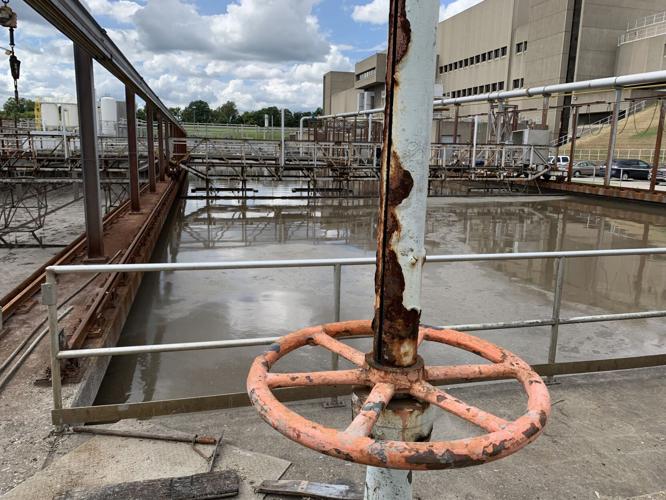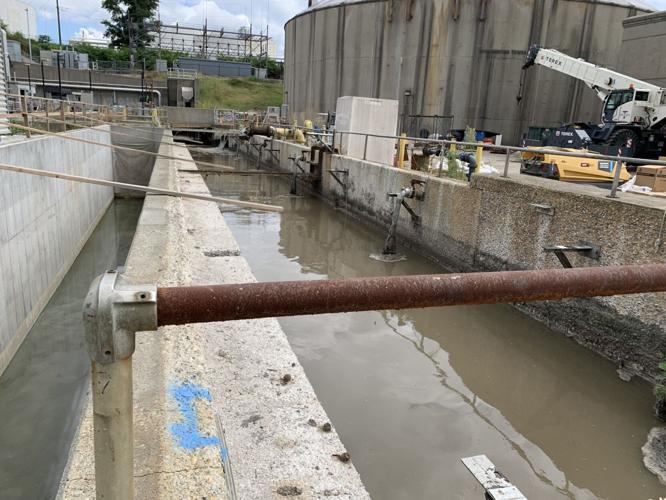LOUISVILLE, Ky. (WDRB) -- Every homeowner in Louisville pays for flood protection, sewer maintenance and water treatment. The utility charged with those responsibilities, the Metropolitan Sewer District, is in the middle of massive infrastructure upgrades, which will be funded at least partially with a rate increase for all Jefferson County customers.
When the utility set its 2024 budget, plans called for more than $250 million in investments for nearly 200 projects. That includes upgrades to the Morris Forman Water Quality Treatment Center and nearby Paddy's Run Flood Pump Station, which is crucial in flood protection.
There are some pipes that date back to the 1860s, and crucial facilities rely on technology from the 1950s.
To help offset some of the costs, MSD's board voted unanimously in July to increase the rates for Jefferson County customers by 6.9%. That added $4.84 to the average customer's monthly bill.
"The main driver for our rates is the money that we have to borrow," MSD Executive Director Tony Parrott said.
'Continued need for rate increases'
Morris Forman is located at 4522 Algonquin Parkway along the Ohio River, a plant that has been in operation since 1958. On a recent day at the plant, Daymond Talley, deputy chief of operations at Morris Forman, pointed out a channel that had water flowing into it from Rubbertown.
"This is 65 years old, and, yes, never been emptied," hesaid. "That's original concrete from 1955."
Talley said Morris Forman has bridges that need to be constantly monitored during operation.
"To close these, we have to come out and turn them by hand," he said.
MSD is in the process of upgrading the infrastructure at Morris Forman, which is the state's largest water quality treatment center. They are building new — and additional — channels to hold the intake, and they are automating other processes.
The plant located is just down the road from another relic, Paddy's Run Flood Pump Station, which was built in 1953.
"We can't find any parts for anything in here," said Dane Anderson, flood protection operators director for MSD. "Everything has to be reverse engineered if anything's broken."
The six pumps at Paddy's Run protect more than 200,000 people and $33 billion in property, which includes west Louisville.
"We still have a lot of work to do to address those aging infrastructure ... so that we can kind of manage the day-to-day needs of the community and also be able to support the viability and economic development of our city," Parrott said.
Work is underway to replace the Paddy's Run Flood Pump Station. The project will more than double the pumping capacity, increasing from 875 million gallons per day to 1.9 billion.
"With these two projects — Paddy's Run and Morris Forman — over a half-billion dollars of work still to be constructed in the next two-to-three-year window," Parrott said.
Federal and state grants ease the price tag, but there's another way to pay the bills: raising homeowner rates.
"When we look out over the next two-to-five-year window, there will be a continued need for rate increases," Parrott said.
MSD's board can raise rates up to 6.9% annually, which happened six out of the last eight years between 2016-22. In July 2023, the board voted for another increase, adding on average just under $5 to every Jefferson County customer's bill. That went into effect Aug. 1.
Parrott stresses that the needs for Louisville go beyond big projects. An MSD spokesperson says, "payments on outstanding loans to help fund these needed capital improvement projects in five years will be $40 million more than they are during this fiscal year."
There's also the consent decree, which is a federal agreement that has tied up most of MSD's spending in sewer and water quality improvements to get the city into compliance with the Clean Water Act. To meet the environmental requirements of the consent decree, Parrott said they have "to reduce sewer overflows that occur during periods of heavy rain, while still addressing the ongoing challenge of aging infrastructure and facilities that have reached the end of their functional lifespan."
The utility did complete one significant piece last year when they opened the 18-story, 4-mile Waterway Protection Tunnel. The project cost $221 million and can store up to 55 million gallons of storm and wastewater.
"Improve the Ohio, get that water treated and get back in so communities downstream from us can enjoy clean water," Anderson said.
Parrott said MSD recently negotiated part of the federal agreement, extending it through 2035.
"We did build in some flexibility to be able to budget $25 million a year to address what we call asset management or to address priority needs," Parrott said.
Back in 2017, Parrott introduced the Critical Repair and Reinvestment Plan, a long-range plan to shore up the city's aging flood protection and sewage treatment systems, stormwater-prone viaducts and crumbling sewers.
After making little progress initially, Parrott said the completion of the tunnel and the decree's renegotiated timeline leaves MSD in a better position.
"I feel significantly better today than I did five years ago, because now we have a plan and now we're working that plan," he said. "So the question really becomes how fast do we do the work."
There is no proposed or projected rate increase for FY 2025 at this time, but Parrott said the board is likely to consider one.
"I think there will definitely be rate increases," Parrott said. "Depending on how projects flow from a cash flow perspective, supply chain issues ... will determine how much money we have to borrow and how much we have to issue debt, and that will influence how much the rate increase will have to be. But right now, the projection, at least, is to have that below our board authority."
MSD can raise the rate on their own up to 6.9% annually, and Parrott said, at this time, they don't intend to visit Metro Council for a higher increase.
"We feel very confident that the way the schedule is set up now, and staggered through 2035, that we will be able to meet those regulatory requirements and those deadlines no problem," Parrott said.
Parrott did warn that there could be new regulations enforced, which the city may have to address when that time comes. And even as rates increase, the average customer wastewater charge is lower than Indianapolis, Nashville and Cincinnati.
The utility has a 30% discount available through its Emergency Wastewater Rate Assistance Program, EWRAP, and Senior Citizen Discount Program. Customers in Jefferson, Bullitt, and Oldham counties are eligible for the discount.
MSD's spokesperson said they have also donated $1 million to organizations that assist customers who have trouble affording their bills.
Copyright 2023 WDRB Media. All Rights Reserved.















